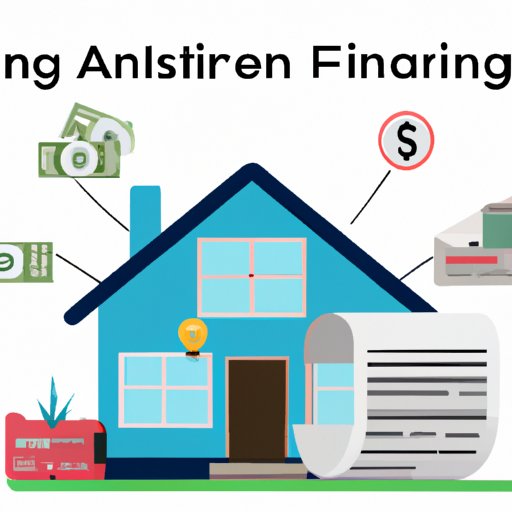Introduction
In-house financing is an alternative form of financing that allows businesses to provide their customers with access to funds without having to go through a third-party lender. This type of financing can be beneficial for both the business and the customer, as it allows businesses to offer more flexible payment options while also providing customers with access to the funds they need. However, there are potential risks associated with in-house financing, so it’s important to understand the process before deciding whether or not it’s the right option for your business.
Overview of In-House Financing
In-house financing is when a business offers its own financing options to customers rather than relying on a third-party lender. This type of financing typically involves the business offering a loan or line of credit to the customer, and then collecting payments from the customer directly. The terms and conditions of the loan or line of credit will vary depending on the business, but the overall concept is the same.
Benefits of In-House Financing
One of the major benefits of in-house financing is that it gives businesses the flexibility to create their own terms and conditions for repayment. This can include lower interest rates, longer repayment terms, and other features that may not be available with a traditional loan. Additionally, businesses may also be able to offer more flexible payment options such as automatic deductions or deferred payments, which can make it easier for customers to afford their purchases. Finally, in-house financing can help businesses build relationships with their customers, as it provides a way for them to show their commitment to customer service.
Steps Required for In-House Financing
If you’re considering offering in-house financing, there are several steps you’ll need to take to ensure everything is set up properly. First, you’ll need to establish the terms and conditions of the loan or line of credit, including the interest rate, repayment period, and any additional fees or charges. Next, you’ll need to determine the eligibility requirements for customers, such as credit score and income level. Finally, you’ll need to set up an escrow account to hold the funds until they’re repaid.
Potential Pitfalls of In-House Financing
While in-house financing can be beneficial for businesses and customers, there are also potential risks involved. One of the biggest risks is the high risk of default, as customers may not be able to make their payments on time or at all. Additionally, it can be difficult to collect payments from customers, as you won’t have the support of a third-party lender to help enforce the loan agreement. Finally, in-house financing isn’t subject to the same regulatory oversight as traditional lenders, so there’s less protection for both the business and the customer.
How to Determine if In-House Financing is Right for Your Business
Before you decide to offer in-house financing, it’s important to assess your current financial situation to determine if it’s the right choice for your business. You should also analyze the benefits of in-house financing and consider the risks involved. When making your decision, you should also think about how much time and resources you’re willing to devote to setting up and managing the program. Finally, you should compare the cost of in-house financing to other financing options to determine if it’s the most cost-effective option for your business.
Different Types of In-House Financing
In-house financing can come in many forms, such as installment loans, leasing, and deferred payment plans. Installment loans are typically offered to customers who don’t qualify for traditional bank loans, and involve making regular payments over a period of time. Leasing is when a business leases out a product or service to a customer and collects payments over a specified period of time. Deferred payment plans are similar to installment loans, but allow customers to pay for a purchase over time without incurring interest.
Tips for Successful In-House Financing
Once you’ve decided to offer in-house financing, there are several steps you can take to ensure its success. First, it’s important to set clear terms and conditions so that customers know what they’re agreeing to. It’s also important to monitor payment activity to ensure customers are making their payments on time. Finally, utilizing automated collection systems can help make the process of collecting payments easier and more efficient.
Conclusion
In-house financing can be a great way for businesses to provide their customers with access to funds. It can also be beneficial for customers, as it allows them to make purchases that they may not be able to afford with a traditional loan. However, there are potential risks associated with in-house financing, so it’s important to assess your current financial situation and analyze the benefits and risks before deciding if it’s the right option for your business. Additionally, it’s important to set clear terms and conditions, monitor payment activity, and utilize automated collection systems to ensure the success of your in-house financing program.
(Note: Is this article not meeting your expectations? Do you have knowledge or insights to share? Unlock new opportunities and expand your reach by joining our authors team. Click Registration to join us and share your expertise with our readers.)
